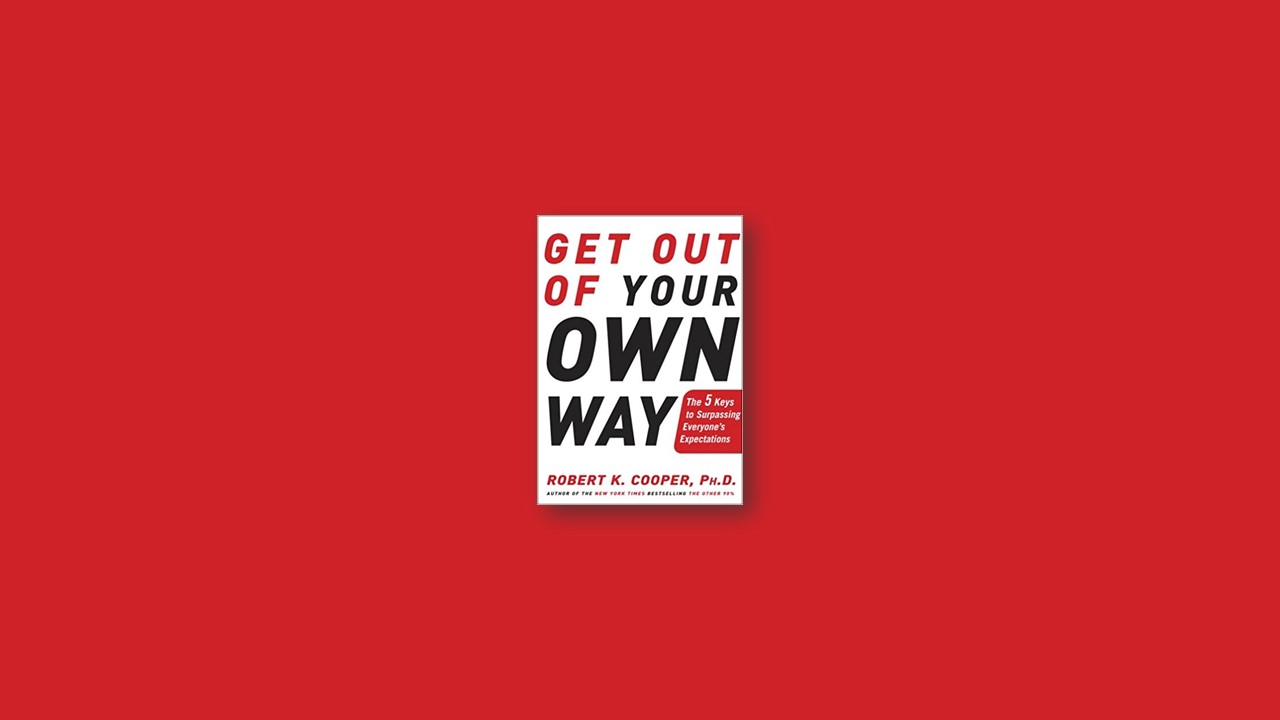Star performers in all walks of life, whether they do it intuitively or with sophisticated coaching, are applying lessons that scientific research and careful observation have been imparting to us for years. Those lessons are counterintuitive, and often contradictory to the received wisdom about success that most of us have been fed throughout our lives, but they work where the traditional advice leaves most of us in a knot of tension and frustration. They’re only secrets to those unable to see them.
Those five choices are as follows:
- Direction, not motion
- Focus, not time
- Capacity, not conformity
- Energy, not effort
- Impact, not intentions
Key #1 DIRECTION Not Motion
It’s not how busy you are or how fast you’re moving, it’s how effectively you are advancing in the right direction.
You must choose the right moments, not motion, and these moments must be carefully aligned on a through-line to your best possible future. It only takes a moment, a clear far-forward glimpse, a special “stretch” toward the future here and there every day, to keep the forebrain performing its magic, keeping you ahead in a changing world and positioning you to achieve an ever-better future. It only takes a moment, and few people ever know to do it.
And there’s a caution here, too. If you don’t engage your forebrain and its scanning of the most compelling possible future, it backs off, and even stops altogether and actually atrophies, as brain areas can do when they are not being fully engaged. Then your other reactionary, survival-today-oriented brain circuitry fills the void, leaving you even less able to imagine and pursue your best future.
There’s a general rule here called the Brain Displacement Principle, which is generally summed up in Bob Dylan’s famous axiom “He not busy being born is busy dying”: If you are not deliberately using your most useful brain areas to move you forward, then your least useful ones will probably take over.
So fragile is this balance when it comes to your forebrain that you can permanently lose the capacity to truly envision a future for yourself in any but the most wishful and fantastical ways: One day that capacity just vanishes, along with your ability to realistically plot a way from where you are now to someplace you want to be in the future. Put bluntly, you become more like a machine and less like a person. You can still follow all the rules that are programmed into you—you just can’t dream of something new and make it happen.
On the contrary, when you tap into the forebrain’s readiness to activate and shape the way your life and your work connect to your unique abilities and passions, the forebrain is strengthened in much the same way that a muscle is strengthened by exercise, and you move forward more and more powerfully, more and more easily, less and less at the mercy of your reactionary brain centers.
Achieving what others think you can’t is largely a matter of getting out of your own way, of choosing to shut off the motion for a while and permitting your brain to offer direction instead, and then building in that direction. The chapters in this section will help you with that, too, and with a range of other techniques and methods for lining up precisely the right moments on that through-line to your dreams.
Key #2 FOCUS, Not Time
It’s not how well you plan your time, it’s how effectively you put your attention on what matters most . . . in advance and as it unexpectedly appears.
The brain wants to take you in a hundred directions and make you worry about unimportant details.
If the vital moments for moving your goals and dreams forward could be counted on to appear at scheduled times, then you would be carrying a daily planner everywhere you go and cramming it with every detail you could imagine.
Moving steadily toward what’s possible means putting the right parts of your brain in control at the right moments and not getting stuck in counterproductive routines and habits, ruled by the clock and the brain’s inner timekeeper.
Eons of neural wiring prime your brain to move in lockstep with daily survival demands, especially those of the clock. Whenever you become truly focused with real momentum on something that really matters, your brain wants to snap your attention back to what time it is and what you’re supposed to be doing right now. Your momentum becomes lost, and then you waste time trying to regain it, only to get interrupted by your brain’s neurotic time-watching all over again. And so it goes. The more this happens, the more your sensory cortex—the brain part that helps you feel engaged and tuned in to life—seems to disengage, as if shrugging its cerebral shoulders, and it relinquishes what little control it once had to those ancient hypervigilant panic-button areas like the amygdala, so you can become trapped in an endlessly reinforcing spiral of time anxiety that hijacks your attention and yet leaves you endlessly worried about what time it is. When this happens you may find yourself burrowing into a time planner and trying to run your life from there.
Key #3 CAPACITY, Not Conformity
It’s not how good you are at copying others or making incremental improvements, it’s how bold you are at unlocking hidden potential—in yourself and others—and applying it in new ways.
Your amygdala and RAS are conformity-driven fear mongers, always quick to hit the panic button and let other parts of the brain ask questions later. They see you as one big problem to be fixed, and fixed now, with all kinds of other hidden faults waiting to be discovered and fixed next, before you do something really stupid that makes both of you extinct.
That’s fine if conformity—or survival alone—is your goal. If you conform to everything, you’re visible to no one—which is just the way the amygdala and RAS want it.
And it’s no surprise that we also turn our superb fault-spotting magnifying glasses on others. That guy or gal over there, doing something wrong—or at least differently from how we would do it—our brain’s ancient wiring makes sure to emphasize that he or she could turn out to be a threat to our existence, too. Of course, others are often happy to return the favor and let us know all our shortcomings and weaknesses, with a little exaggeration thrown in for good measure.
Our other typical reaction to all that internal and external criticism is to seek conformity: to do things pretty much like everyone else is doing them, to aspire to pretty much the same things as everyone around us. Your brain figures if you’re doing what everybody else is doing, you must be doing it right—or at least right enough to get by—and at least if you don’t stand up too tall, you won’t get knocked down as often.
Yet parts of your brain know that while you might not be able to do everything, there are some things you can do better than practically anyone else. To make your dreams reality, you want to tap into every source of genius available, in yourself and others. You want to collaborate so you get the best from everyone, instead of finding them hiding their best from you.
Key #4 ENERGY, Not Effort
It’s not how hard you try or how long you work, it’s how effortlessly you get more of the right things done.
We all know people who excel and, as the saying goes, “make it look easy,” even though what they are doing is in fact darn difficult. Not just great athletes or instinctive leaders, but people who ride out tough times while still brightening instead of depressing those around them, or who can get up at dawn to prepare a Thanksgiving meal and still cherish fellowship with their guests, or who find the moments during a hectic and stressful day to bring a smile to the faces of others. It’s all about applying energy instead of effort whenever that is possible. And it’s possible much more often than our brains would have us believe.
Thomas Edison did the world a disservice when he famously said that genius is 1 percent inspiration and 99 percent perspiration.
Not that perspiration doesn’t matter, but too many of us have come to accept that perspiring is practically all there is. Edison just underestimated his own genius, as so many of us do, failing to recognize how much of his perspiration started from the energy of inspired ideas, not brute-force effort.
You go a lot faster with a lot less friction, generating more energy to hit higher targets and do it in less time and with less stress and strain, when you streamline your efforts, finding the precise mechanisms and catalysts that zoom progress forward, and jettisoning all the rest that’s just perspiration. Nothing wears you down like trying harder instead of smarter. There’s great wisdom in the adage that insanity consists in trying the same thing over and over, or faster and faster, and expecting different results.
Key #5 IMPACT, Not Intentions
It’s not how lofty your intentions are or how much you want things to improve, it’s how measurable a difference you are making in living your deepest values and achieving your biggest goals.
The thinking areas of your brain generally love lofty aspirations, well-meaning promises, and good intentions for the future. Where they come up short is in turning those wishes into realities in the here and now.
Instead, they wait for things to be immediately relevant to your survival or well-being before paying serious attention to them. Dancing with a little girl can’t possibly make a difference to those things, your brain assumes, so why bother? Maybe another day you can squeeze it in.
But the more ingrained your habits become—the more you keep doing what you’ve always done instead of something new, the more you delay aiming at breakthroughs until conditions are just right or until you finally catch up on all your day-to-day chores—the more your brain locks on to those habits and defends them against all alternatives. “This is the one way I know to respond,” it says, “and since I’m already good at it, I will repeat it.”
Breakthroughs just don’t happen that way. Good intentions can float around endlessly in your upper cerebral chambers, making you feel good even though you don’t actually do anything or change anything. Until you act with impact and confirm that what you’re doing is making a difference right now, your intentions don’t amount to anything more than a passing thought. To harness your brainpower to what’s actually going to make a difference, you must keep it focused on impact, not intentions. Only when you track progress—one impact point after another—do you mobilize every ounce of your capacity to make the biggest difference.


